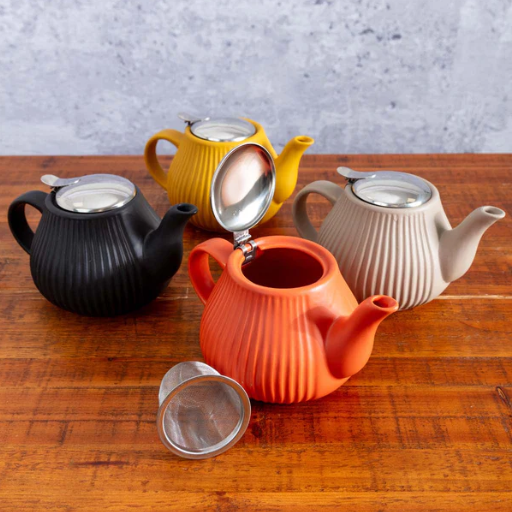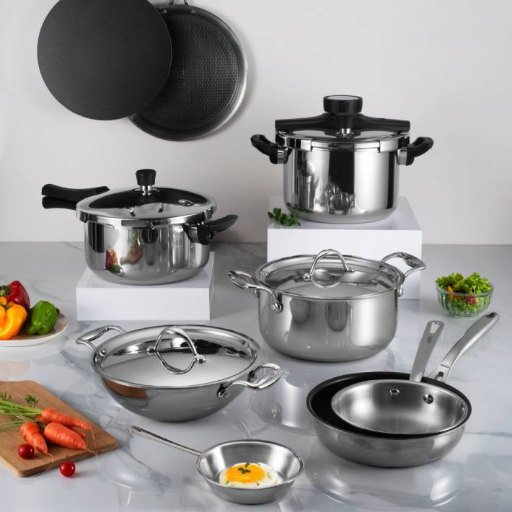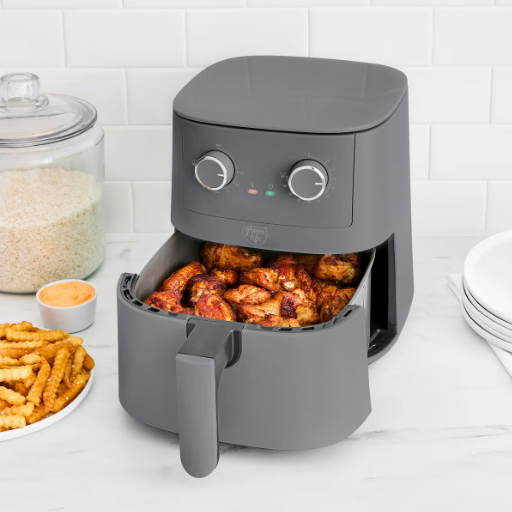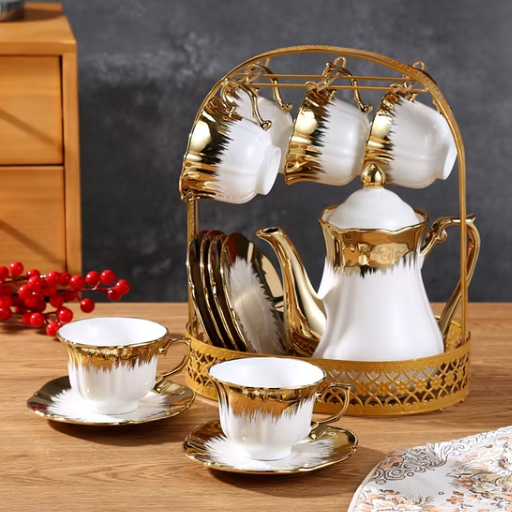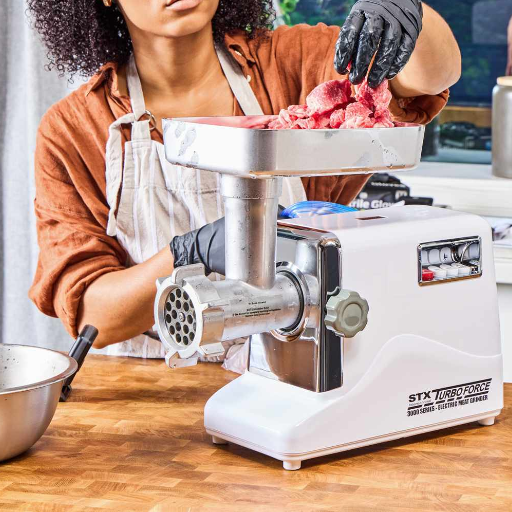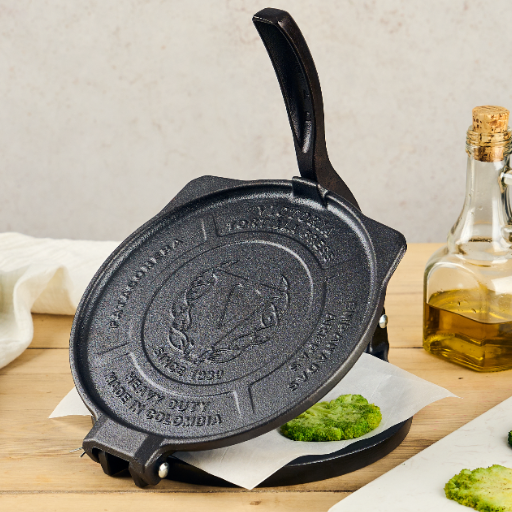Choosing the right kettle is important not only for tea lovers but casual drinkers as well. Factors like design, material, and features all come together to create a perfect kettle which makes understanding some basic concepts important. In this guide, we will discuss multiple types of kettles which include, electric kettles and stovetop kettles. Each of these will be discussed and analyzed with their features, pros, and cons. Moreover, some useful advice will be provided to aid the reader decide during the purchase such as the durability and appeal of the kettle. In conclusion, the reader will have the information needed to make a confident and smart decision regarding the tea kettle of their choice.
What are the Different Types of Tea Kettles?

Tea kettles can be categorized into two main types based on their functionality and usage—electric kettles and stovetop kettles.
1. Electric Kettles
Electric kettles are designed for speed and convenience. Powered by electricity, they feature an internal heating element that rapidly brings water to a boil. These kettles often include advanced features, such as temperature control, auto shut-off, and keep-warm functions, making them ideal for precise brewing methods. However, they require access to an electrical outlet and are generally more expensive than stovetop options.
2. Stovetop Kettles
Stovetop kettles are traditional and versatile, functioning on various heat sources, including gas, electric, or induction cooktops. Typically made from materials like stainless steel, copper, or glass, stovetop kettles are durable and aesthetically pleasing. While they lack the speed and advanced features of electric kettles, they are straightforward to use and often more affordable. However, they can take longer to heat water and require direct supervision to prevent boiling over or overheating.
Overview of Electric Tea Kettle Options
Their convenience, speed, and advanced features make electric tea kettles a very popular option. The heating element comes in the form of a base for a kettle, which is powered by electricity. In busy homes and workplaces, these kettles are ideal, as their rapid boiling time, which is often faster than that of stove-top kettles, is one of their key selling points. Many electric kettles come equipped with temperature control settings, which allow users to heat water to the correct temperature for various types of tea, making precise heating possible for green tea and oolong tea. Further, modern electric kettles offer additional feature safety measures like shutoff, boil-dry protection, and cool-touch exterior.
Including stainless steel, plastic, and glass models, there are also different designs and materials available. While stainless steel kettles are praised for their durability and heat retention, glass models, although not as effective at heating retention, have an aesthetically pleasing transparent body that allows users to view the boiling process. However, their lightweight and budget-friendly nature means plastic options have shorter lifespans than others. A user should also consider features such as capacity and energy efficiency along with cordless operation when looking for the right fit for fulfilling one’s needs regarding electric kettles.
Features of Stovetop Kettle Models
Stovetop kettles have earned popularity as a reliable choice for heating water since they do not require any electricity. One of the notable features of these kinds of kettles is the construction material which can be stainless steel, copper, or enamel-coated steel due to their ability to retain heat and longevity. Many models also have a heatproof handle for safe pouring, in addition, the spouts are fitted with a whistle to alert the user when the water is boiling. Furthermore, stovetop kettles can be used on several heat sources such as gas, electric, and induction stove tops making them useful in different kitchens. Their simple design along with the lack of electric parts greatly increases their lifetime and makes maintenance easy. When purchasing these kettles it is important to consider design factors such as capacity, material, and compatibility with the kitchen’s heating system enabling the user to achieve optimal efficiency.
Benefits of Ceramic Tea Kettles
Due to their distinct materials and structure, ceramic tea kettles have a myriad of pros. First, a kettle made of ceramic will enable excellent heat retention owing to it’s superior insulating properties. This helps keep water warm for long durations. Moreover, ceramic kettles being non reactive means they do not change the taste, color or quality of water, making them the perfect choice for brewing tea. Their surfaces are often coated with a glaze that prevents staining and odors, allowing for a cleaner and hygienic environment.
With the added benefit of being decorated with various designs, ceramic kettles also greatly improve the aesthetic value of kitchens. Even though it is important to check the ceramic kettle’s compatibility with the heating source, most ceramic kettles can be used with gas and electric stovetops. Finally, optically transparent clay provides excellent durability and eco-friendliness since there are no plastic parts that are prone to damage. When purchasing a ceramic tea kettle, make sure to evaluate the capacity, design, and heat source compatibility for optimal long-term performance and satisfaction.
How Does a Whistling Stovetop Tea Kettle Work?

The water in a whistling stovetop tea kettle begins to turn into steam as it is heated. This steam builds pressure within the kettle and results in the formation of steam. It can escape through a purposely designed spout that has a small opening or a whistle mechanism. The steam will whistle when boiling over signals indicating the water has reached its boiling point. Whistling tea kettles work efficiently because of the audible alert resulting from the combination of thermal energy and pressure in the stove.
The Science Behind the Whistle
The sound produced when a liquor kettle is smoking, results from a combination of fluid mechanics and sound phenomena. The steam which is produced through the boiling of the water escapes from a spout’s whistle. The whistle is usually composed of two plates of metal which are separated by a gap or hole. The steam passing from the gap undergoes an increase in velocity and causes the air particles in the vicinity to vibrate which gives rise to sound. The vibration produces the characteristic whistling sound. The welk and dank of the kettle depends on the amount of pressure in the steam, the shape of the teapot, and the material out of which the kettle is made. The combination of airflow, pressure, and design provides an optimal and audible signal of the water reaching its boiling point.
Why Choose a Whistling Kettle?
The audible whistle of a whistling kettle makes it easy, efficient, and practical for daily use. It emits an audible whistle that informs the user of water reaching its boiling point, thus assisting in conserving both energy and time. Its simplistic design does not require any additional technology to monitor during the boiling and is user-friendly. Like most whistling kettles, it is made from durable heat-resistant metal stainless steel which guarantees efficiency and great performance for a long time. Its versatility makes it a great option as it can be used on gas and induction stovetops. A whistling kettle is perfect for anyone who needs safety, convenience, and a timeless design for effective water heating.
Why Does a Tea Kettle Whistle?

The physics by definition covered in the sound produced by the whistling kettle is the awaking movement of steam and how it interacts with the kettle’s spout. Water inside the kettle heats up and once it reaches a specific temperature and its boiling point, water turns to steam. This steam exits from the spout’s small opening, causing vigorous air pressure oscillations. These oscillations form sound waves which with our limited understanding are identified as the kettle’s whistle. This sound comes through the whistle and spout which is constructed in such a way that the sound, due to its shape and design, is distinct and modulated.
Understanding the Stainless Steel Whistling Mechanism
The whistling feature of a stainless steel kettle combines thermoacoustics and fluid mechanics. When water is heated in the kettle, it turns to steam which is then released through an opening at the kettle’s spout. This opening usually contains an integrated whistle with sharp, small edges. The steam flow is supersonic as it moves past the sharp edges leading to fluctuations in air pressure. These fluctuations eventually result in moving Sound Waves. The opening restricts the flow of steam, hence its size and form determine the pitch. The gradual increase and decreasing sound wave intensity is known as amplitude modulation.
Stainless steel is a highly preferred material due to its strength, resistance to rusting, and good heat conductivity. The material also helps in the effective steam production by uniform distribution of heat and minimization of hotspots which is necessary for consistent whistling frequency. Additional modern designs improve the transparency and effectiveness of sound energy by enabling the kettle’s practical usage while keeping it clean and dependable.
Common Issues with Whistling Stovetop Kettle
- Whistle Fails to Sound
One of the most common issues occurs when the whistle fails to sound. This problem is often caused by a blockage in the spout or whistle mechanism due to mineral deposits, limescale, or debris buildup. Regular cleaning with descaling agents or vinegar can prevent this issue.
- Steam Leakage from the Lid or Spout
Improper sealing of the kettle lid or spout results in steam escaping from unintended areas, reducing the pressure needed to activate the whistle. This may stem from worn-out rubber seals, misalignment, or warping over time. Replacing seals or ensuring proper lid alignment can resolve steam leakage.
- Discoloration or Rusting
While stainless steel kettles are resistant to rust, improper maintenance or exposure to hard water can cause discoloration or even rust. Using distilled water and properly drying the kettle after use can mitigate these issues. Rust removal can typically be achieved with specialized cleaning agents or solutions like baking soda and water.
- Uneven Heating or Warping
Uneven heating may result in longer boiling times or inconsistent whistling. This is often due to the kettle’s base warping from high heat exposure. Ensuring the kettle is used on appropriately sized stovetops and avoiding overheating reduces the risk of warping.
- Weak or Irregular Whistle Sound
A weak or irregular whistle sound can occur if the airflow through the whistle opening is obstructed or if the whistle mechanism is damaged. Inspecting and cleaning the whistle or replacing damaged components often resolves this issue.
Proper maintenance and periodic inspections are essential to ensure optimal performance and the longevity of a whistling stovetop kettle.
Can Kettles Be Used for More than Just Boiling Water?

Yes, kettles can be used for more than just boiling water. They are versatile tools that can be employed for tasks like preparing instant soups, reheating liquids, or even cooking simple dishes such as noodles or oatmeal. Additionally, they are useful for sterilizing small items, such as glass jars or baby bottles, by boiling water directly in the kettle. However, these alternative uses require careful consideration of the kettle’s material and cleaning needs to prevent any residue buildup or damage.
Making Stovetop Tea and Coffee
Preparation of black tea, green tea, or herbal tea requires roughly the same amount of skill, water temperature, and time to steep. There can be a slight variation in numbers with some being able to take advantage of a few degrees more here or there, however, it’s important to have a general guideline otherwise things can get out of hand in both directions. Most black teas go well with 200°F (93°C) whereas green and herbal teas are less picky and can work with a few degrees lower. The best practice is to boil the water and pour it over either a bag of tea or tea leaves in a mug, let it steep for two to five minutes, and enjoy. Stovetop coffee can be made with a pour-over device or a French press. With coffee, water needs to be just under boiling, approximately 195-205°F (90-96°C). When the coffee grounds get even coverage, optimal flavor is guaranteed. After performing any oral task, I feel like it’s best to clean kettles as the contempt can lead to unwanted flavors and a loss of overall quality.
Alternative Uses for Your Tea Pot
Your teapot, while traditionally used for brewing tea, has a surprising range of alternative applications. Here are some practical and creative ways to repurpose this versatile kitchen tool:
- Brewing Herbs or Infused Water
Beyond tea, teapots can be used to steep fresh herbs like mint, chamomile, or lavender to create herbal infusions. They also work well for making flavored water, such as cucumber or lemon infusions, offering a refreshing and healthy beverage option.
- Homemade Broth or Small Batch Cooking
Teapots can serve as vessels for creating small quantities of homemade broth or reheating soups. Their spout allows for easy pouring, making them particularly handy for cooking purposes.
- Flower Vase or Centerpiece
With their decorative designs, teapots can double as unique vases for flowers or as eye-catching centerpieces for tables. This use offers a charming, vintage aesthetic to your home décor.
- Cleaning Tools and Paintbrushes
Artists and DIY enthusiasts can use teapots to rinse paintbrushes or small tools. The spout provides controlled pouring to avoid spills while cleaning.
- Serving Sauces or Gravies
A teapot works excellently for serving gravies, sauces, or salad dressings. It ensures an elegant presentation while keeping the contents warm.
- Watering Plants
Repurposed teapots can act as decorative watering cans for indoor plants. The spout enables gentle and precise watering without splashing.
These ideas not only extend the functionality of your teapot but also help reduce waste by focusing on creative reusability.
How Long Does a Tea Kettle Last?

A tea kettle’s longevity mainly depends on how you use it and its material and build quality. A stainless steel or glass kettle can last up to ten years if used and cared for properly. Regular cleaning, avoiding overheating, and proper storage can increase a kettle’s durability. Frequent exposure to extreme heat or neglecting maintenance can significantly reduce a kettle’s life. Electric kettles, however, have a much lower lifespan, usually around three to five years due to the components having to be replaced frequently.
Factors Affecting the Longevity of Stainless Steel Tea Kettles
Multiple aspects of material quality and maintenance, along with the frequency of use, influence the durability of stainless steel tea kettles. Stainless steel grades, such as 18/10 or 304, are better at resisting rust, corrosion, and discoloration, thus having a longer lifespan. For users residing in hard water areas, regular cleaning is important to prevent the capture of mineral deposits, as limescale can slowly destroy the kettle. Moreover, minimizing exposure to excessive heat or rapid temperature changes can help reduce the chances of warping or weakening the steel structure. The frequency of use impacts durability too, as intensive use daily causes quicker wear than occasional use. Further extending the longevity of the kettle includes proper care, such as thorough drying after washing and avoiding harsh cleaning tools.
Maintenance Tips for Prolonged Kettle Use
Consistent maintenance is vital in prolonging the optimal performance of a kettle. First, descale your kettle once a month to get rid of limescale that can hinder its efficiency. You can Boil a solution made of equal parts water and white vinegar or a store bought descaling solution. Let the solution sit for 20-30 minutes then rinse it thoroughly.
Also, always empty the kettle after using it so that there is no stagnant water which encourages growth of bacteria and mineral deposits. When cleaning the exterior, make sure to use a damp cloth and not abrasive materials that may scratch the surface. If your kettle has a removable filter, rinse or soak the filter weekly to ensure unobstructed flow of clean water.
Lastly, check the electric components and cord for any wear or damage, and do not ever immerse the kettle in water while cleaning it. Following these strategies will guarantee the prolonging of the kettle’s useful life while also making sure that it functions as it should safely.
References
Frequently Asked Questions (FAQ)
Q: What are the different types of tea kettles available?
A: Tea kettles come in a variety of types, including electric kettles, stove top kettles, gooseneck kettles, cast iron kettles, glass kettles, and ceramic kettles. Each type has its own advantages and is suited for different needs and preferences.
Q: How do I find the best tea kettle for my needs?
A: To find the best tea kettle, consider factors such as the material (e.g., stainless steel, glass, cast iron), capacity, speed of heating, and whether you prefer a stove top or electric option. Reading reviews and comparing features can also help in making an informed decision.
Q: What are the benefits of using a stainless steel whistling tea kettle?
A: Stainless steel whistling tea kettles are durable, resistant to rust, and offer excellent heat retention. The whistling feature alerts you when the water is boiling, which is convenient for multitasking.
Q: Are electric kettles better than stove-top kettles?
A: Electric kettles are generally faster and more energy-efficient than stove top kettles. They often come with additional features like temperature control and automatic shut-off. However, stove top kettles can be more aesthetically pleasing and do not require electricity, making them ideal for traditional tea-making experiences.
Q: What makes a gooseneck kettle special for making tea or coffee?
A: A gooseneck kettle provides precise control over the water flow, which is particularly beneficial for pour-over coffee and delicate teas that require specific brewing techniques. This control allows for an even saturation of coffee grounds or tea leaves.
Q: Is it safe to use a glass kettle?
A: Yes, glass kettles are safe to use as long as they are made from heat-resistant, food-grade glass. They allow you to see the water as it boils, providing a visual indicator of when it’s ready. However, they require careful handling to avoid breakage.
Q: Why might someone choose a cast iron kettle?
A: Cast iron kettles are known for their excellent heat retention and even heating. They are durable and can add a traditional aesthetic to your kitchen. They are particularly favored for brewing tea, as they can enhance the flavor and aroma.
Q: Can a glass electric kettle be used for making tea?
A: Yes, a glass electric kettle can be used for making tea. It combines the benefits of electric heating with the aesthetic appeal of glass, allowing you to see the water boil. Some models even come with built-in infusers for added convenience.
Q: What should I consider when buying a tea kettle?
A: When buying a tea kettle, consider the material, capacity, heating speed, durability, ease of cleaning, and any additional features like temperature control or a whistling alert. Also, decide whether you prefer an electric or stove top model based on your lifestyle and kitchen setup.
Q: What is the Stagg EKG Electric kettle known for?
A: The Stagg EKG Electric kettle is known for its sleek design, precision pour spout, and variable temperature control, making it a favorite among coffee and tea enthusiasts who value both functionality and aesthetics.

